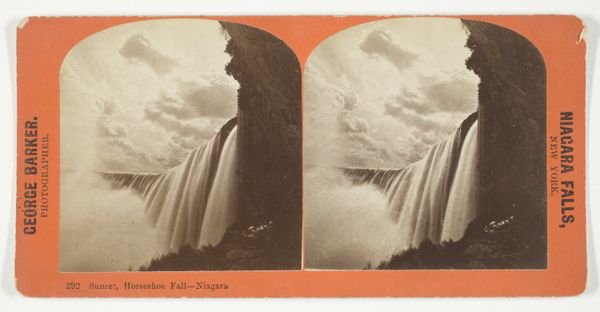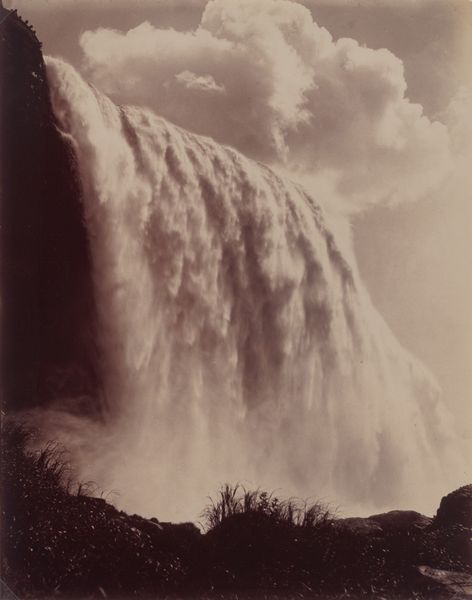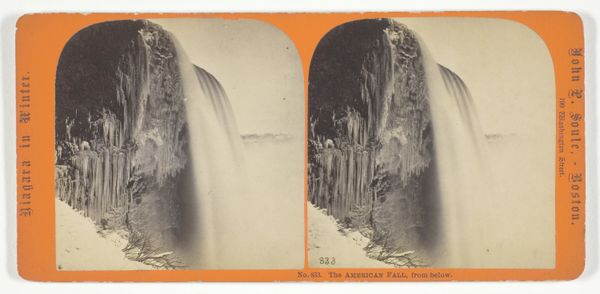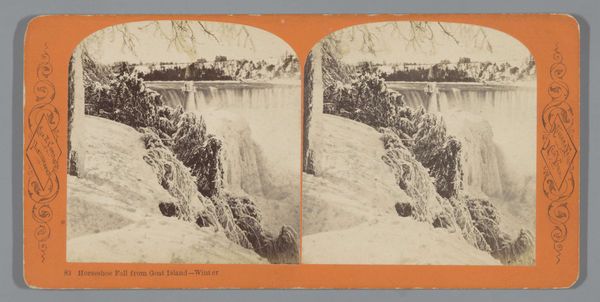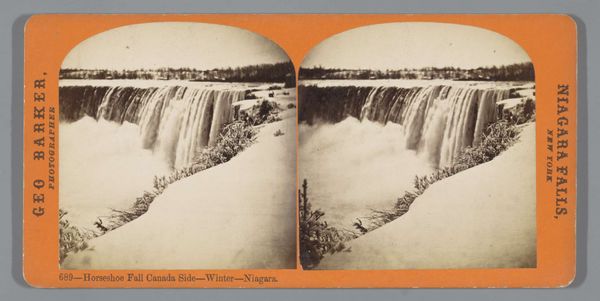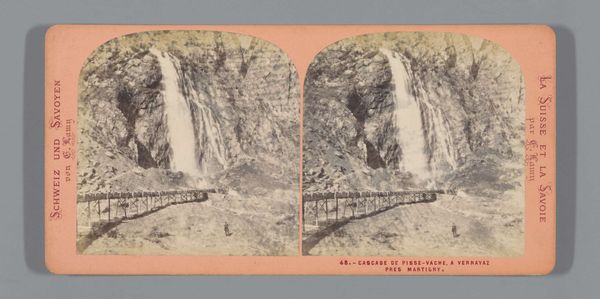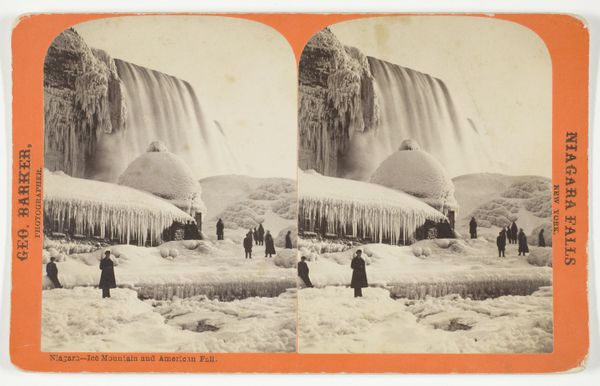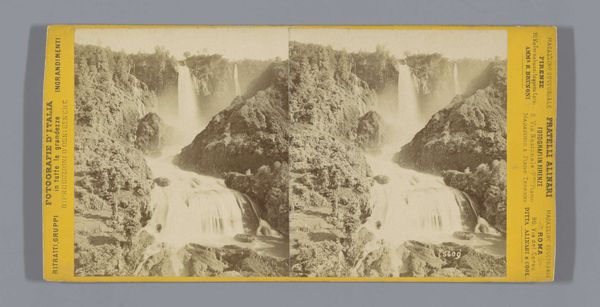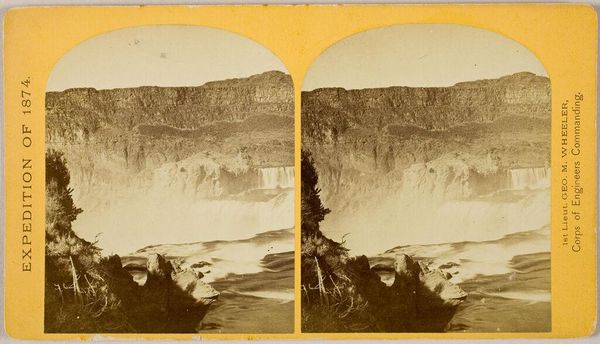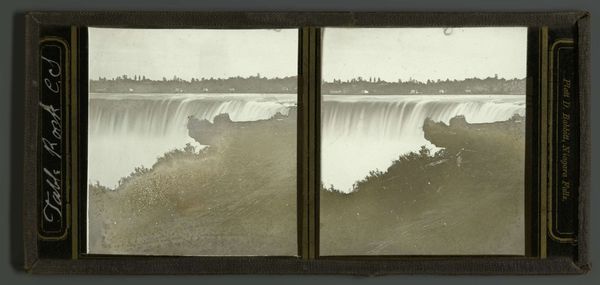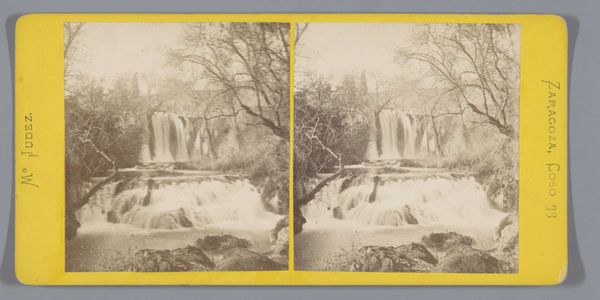
photography
#
pictorialism
#
landscape
#
photography
Dimensions: height 87 mm, width 176 mm
Copyright: Rijks Museum: Open Domain
Editor: This is a stereo photograph of the American Falls, taken by George E. Curtis sometime between 1866 and 1910. The twin images give it a cool 3D effect, and you really get a sense of the immense power and scale of the falls. What strikes me most is how the image almost fetishizes this natural wonder. How do you read this image? Curator: This photograph, seen through a materialist lens, reveals the commodification of nature itself. We're looking at a mass-produced image designed for consumption, packaging the sublime experience of Niagara for easy distribution. Note the photographer, Curtis, becoming a conduit, facilitating the access to this landscape. What’s interesting is how photography itself, a relatively new technology at the time, aided this process, transforming the falls from a physical entity into a reproducible spectacle. Editor: So you're saying it’s not just about the beauty of the falls, but about making it available to everyone as a sort of possession? Curator: Precisely. And consider the labor involved in the image's creation: from the extraction of materials for the photographic process, to the physical act of taking and developing the photograph, and then the distribution. It's a chain of production, each step embedded with its own social context. The falls become secondary, almost a raw material itself. It makes you wonder what the environmental impact of that whole production process would be. What do you make of that? Editor: That’s fascinating! I hadn't considered the environmental cost and labor involved in creating an image like this. Thinking about it as a product changes everything. Curator: Indeed. It forces us to examine the complex relationship between nature, technology, and capitalism. The production is not merely artistic, it's an encapsulation of material history. Editor: Thanks, this really offers a new way to interpret such landscape photographs.
Comments
No comments
Be the first to comment and join the conversation on the ultimate creative platform.
